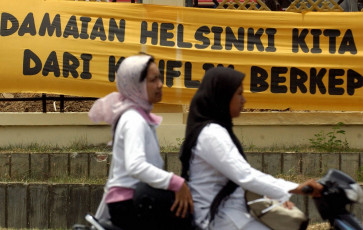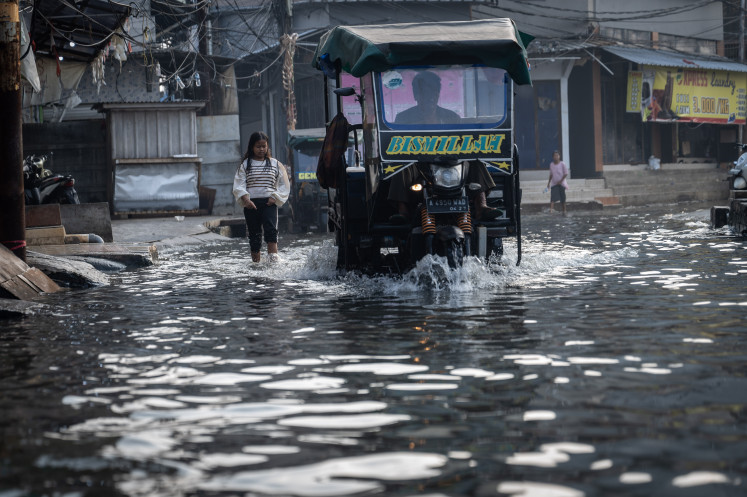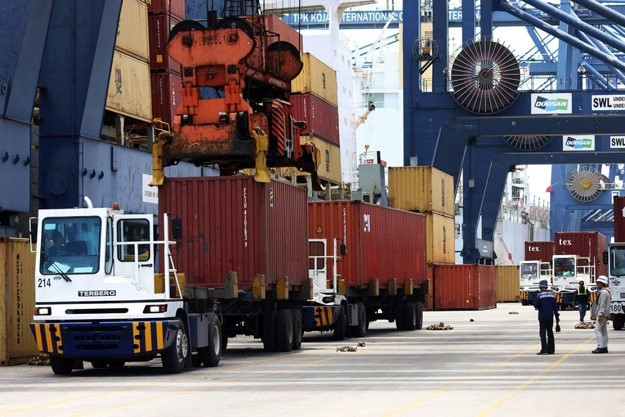Popular Reads
Top Results
Can't find what you're looking for?
View all search resultsPopular Reads
Top Results
Can't find what you're looking for?
View all search resultsWar museums provide lessons against war
Media and governments around the world often use phrases like “the war on COVID-19” and “the fight against coronavirus” in referring to the ongoing efforts to mitigate the virus and its impacts. But war is an entirely different beast.
Change text size
Gift Premium Articles
to Anyone

Media and governments around the world often use phrases like “the war on COVID-19” and “the fight against coronavirus” in referring to the ongoing efforts to mitigate the virus and its impacts. But war is an entirely different beast.
According to the Sea War Museum Jutland in Thyborøn, Denmark, “War is a tragedy and should not be glorified, but the story must be told and the victims remembered.” This may serve to remind its visitors of the catastrophic consequences of war, and it remains highly relevant today as tensions heat up in some parts of the world, even amid the pandemic.
Many advocates of peace have expressed deep concerns over rising tensions in the South China Sea.
“Gunawan”, who preferred not to give his real name, is one such person. The 45-year old private employee furrowed his brow as he watched several fully equipped warships patrolling the South China Sea in a show of force in a YouTube video.
He fixed his eyes on the footage of the event, broadcast by Fakta Peristiwa on its YouTube channel (https: //www.youtube.com/channel/UCsalHuNGrA1Lsn85UhHgmgQ).
“If one of the parties accidentally fires in the direction of the opposing [party], we cannot imagine what might happen. A war could break out,” he laments.
Gunawan points out that it will take time to recover from the current COVID-19 pandemic, which has a global death toll of 377,152 people as of June 4, 2020 and has had a dreadful impact on the health and economies of all nations in the world.
“This [situation] should not be further exacerbated by war. The devastations of war will only [cause suffering], as war disrupts the economy and damages the environment,” says the history graduate of a Jakarta university.
Casualties of war
History records the casualties of war. Guenter Lewy, the author of America in Vietnam (1978), estimated that 1,353,000 lives were lost in North and South Vietnam during 1965-1974, at the height of US engagement in the Vietnam War.
Meanwhile, worldpopulation .com states that more than 100 million people died in World War II (1939-1945). Millions of civilians and soldiers were killed in the war, known as the deadliest global war in history.
In addition to lives lost, war causes disabilities among its survivors – both civilian and military, adults and children – through either direct or indirect injury and illness as a result of war. Disabilities include the loss of a limb or limbs, blindness and deafness that affect survivors for the remainder of their lives.
War museums online
“The history of warfare is intertwined with that of mankind. And while, unfortunately, war is not a rare occurrence in history, it remains one of the most traumatic experiences that a nation and its inhabitants can endure,” journalist Miquel Ros writes in his introduction to CNN Travel’s “12 of the best military museums around the world” (https: //edition.cnn.com/travel/article/best-military-museums/index.html).
Ros then suggests that war museums are a way “to preserve the memory of armed conflicts and the people who fought in them”.
Military and war museums around the globe are popular tourist attractions, despite their relatively grim focus.
Some people visit such museums to learn about history or human civilization; others to pay respect to their ancestors who fought in wars. Whatever the aim, those interested can still tour war museums during the pandemic, although a virtual visit may not offer as much insight as physically visiting a museum might – especially if the museum is housed in a building or located at a site that is directly connected to the event it preserves.
The War Remnants Museum (http: //warremnantsmuseum.com) in Ho Chi Minh City, Vietnam, is one example. Formerly called the Museum of Chinese and American War Crimes, this museum is housed in the former US Information Services building.
Travel guidebook publisher Lonely Planet says about the museum: “Many of the atrocities documented here were well publicized, but rarely do Westerners hear the victims of military action tell their own stories.”
It also notes the variety of military equipment and vehicles on display outside the museum. These can all be viewed on the museum’s “Objects, documentaries” webpage that is accessed from the home page. Of special interest might be the guillotine that the French used “to suppress the struggle for national independence in the early 20th century,” according to the museum’s website.
Although rudimentary, a brief visit to the website and a glance at its even briefer Scrapbook containing visitors’ testimonials may inspire you to make an actual physical trip to tour the War Remnants Museum in person, once it is safe to do so.
The Auschwitz-Bierkenau Memorial and Museum is likely to be on the “must visit” list of any WWII historian, whether amateur or professional. The museum is on the actual site of the “former Germany Nazi concentration and extermination camp” near the industrial town of Oświęcim in southern Poland, and still stands as a silent witness to the “over 1.1 million men, women and children [who] lost their lives” at the camp, the majority of them were Jews.
While the museum is closed during the pandemic, it offers a free online panoramic tour (http: //panorama.auschwitz.org), as well as online lessons on the History page of its main website (http: //www.auschwitz.org/en/).
Topping Ros’s list on CNN Travel is the Imperial War Museum (IWM) in London, which was established in 1917. Ros notes, “Although obviously focused on the topic of war, the staff members do not describe it as a military museum, at least not in the traditional sense of the word.”
“IWM London is a social history museum that explores how modern conflict has affected entire societies, from the front lines to the home fronts, using its rich collection – objects, artworks, interviews with survivors, letters, diaries and much more – to tell compelling personal stories,” says IWM senior curator Laura Clouting as quoted in the CNN Travel article.
Despite their conceptual differences in design, approach, collections and online presence, these museums do not glorify war, and instead aim to present war as part of human history for future generations to learn from to prevent such manmade catastrophes.









